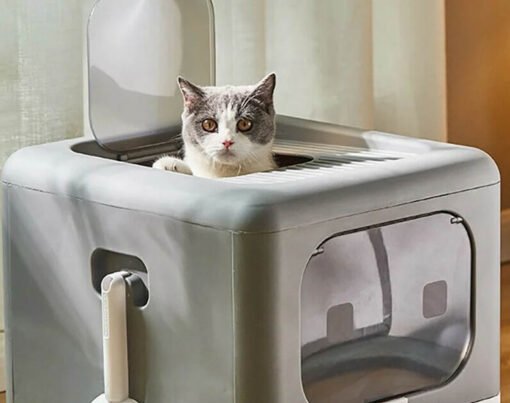Did you just welcome a new puppy into your home? If so, congratulations!
Your life will never be the same again, and that’s a good thing. Your new puppy is going to bring so much love into your home along with it.
With that being said, training a puppy can push you to your limits. Even people who have gone through the process of owning a puppy in the past will often find that it’ll be more difficult to do puppy training than they remember.
But not to worry: There are tips for dog owners that can make training a puppy a little easier than it would be otherwise. By learning how to train a puppy, you’ll be able to successfully work your way through it in no time at all.
We’ve put together a list of puppy training tips that’ll help you get your new puppy under control. Check them out below and begin putting them to good use right away.
Create a Safe Space for Your Puppy
You don’t necessarily need to give your new puppy their own room in your house. But you should set up a space for your puppy somewhere in your home so they can start to feel more comfortable living in it.
Whether you plan to keep your puppy in a crate at times or not, it might be worth investing in a crate you can use to define their space. You can put everything from a dog bed inside the crate to a blanket over the top of it so it feels cozy when they get inside.
Providing your puppy with their own space will show them that they’re now a part of your family. They’ll warm up to your home so much faster when they see you’re carving out a place for them.
Provide Your Puppy With a Place to Eat and Drink
From the moment you welcome a new puppy into your home, you should let them know where you’re going to put their food and water. Think long and hard about where you’d like this place to be since you should try to avoid changing it around on them all the time.
Your puppy should be free to go and get some food or water whenever they would like. It should be in a spot that will make it easy for them to find. You should also get yourself into the habit of giving them food at around the same times each day and refilling their water bowl as necessary.
Work on House Training Your Puppy ASAP
Arguably the hardest part of training a puppy is going to be house training them. It’ll take you some time to get your puppy to realize they need to go outside to pee and poop.
From the very first day you welcome a new puppy into your home, you should begin taking them outside first thing in the morning. You should also start taking them out any time you have the slightest sense they might need to use the bathroom.
Every time your puppy uses the bathroom outside, you should praise them and possibly even provide them with a treat. You should also figure out a way for them to let you know when they need to go outside.
This might mean taking them out the same door each time you bring them outside to use the bathroom. It’ll make them more likely to head to this door and maybe even scratch it when they have to go to the bathroom.
Teach Your Puppy to Walk On a Leash
Some people are under the impression that all dogs know how to walk on leashes from the moment they’re born. But this couldn’t be further from the truth.
At first, most puppies are going to be very awkward when you get them on a leash. They won’t understand the concept of it and might refuse to walk next to you on a leash, let alone in front of you. It’ll make you feel like you’re dragging them around at times.
The key is to remain patient when you’re training a puppy to walk on a leash. Rather than trying to take them for long walks, you should attempt to walk them around on your own property before extending your walks over time.
It might take your puppy a few days or even a few weeks to learn how to walk on a leash. But they should eventually get the hang of it and start to look forward to the walks they go on with you.
Introduce Your Puppy to Other Dogs
When you bring your puppy home, they might still be too young to start socializing with other dogs. Most puppies will need to get a series of vaccinations before they’re able to spend time around other dogs.
But once you’re able to get them immunized, you should make it your mission to introduce your puppy to other dogs early and often. You can have them say hello to other dogs while you’re walking them. You can also have them say hello to other dogs at places like dog parks.
Some dogs simply aren’t going to be as social as others and may not show a real interest in palling around with other pups. But if nothing else, you’ll want to try to get your puppy comfortable enough to be in the same room with other dogs without freaking out too much.
So many dogs end up not getting along with other dogs because they weren’t ever introduced to them at a young age. Try not to make this mistake when training a puppy.
Train Your Puppy Basic Commands
Dogs are different from other types of pets in that you can train them to obey many basic commands. You should try to take full advantage of this when you’re training a puppy by teaching them as many of these commands as you can.
“Sit!” is obviously one of the most popular commands that people teach their dogs. It should usually be the first command you try to teach your dog since it’s an easy one for your dog to master.
But why stop there? You should also try to teach them other commands, too, so that you’re able to communicate with your dog as effectively as possible.
Here are a few basic commands you can try to use while training a puppy:
- “Stay!”
- “Come!”
- “Wait!”
- “Drop it!”
You can also go ahead and teach your puppy commands like “Roll over!” if you would like. A command like this won’t always have many practical applications. But it will help to bring you and your dog closer and allow you to have a good time together.
Tell Your Puppy Not to Nip
Many puppies will nip at people and other pets when they’re still on the younger side. In some instances, they’ll do this to show aggression. But oftentimes, they’ll do it simply because they haven’t yet learned how to react to being around people and pets.
Just like it’ll be important to teach your puppy to do what you want them to do, it’ll be just as important to teach your puppy what not to do. Nipping will be one of these things.
Any time your puppy starts to nip at you or someone else, you should firmly tell them to stop doing it until they get the picture. You might also want to remove them from the situation they’re in to show them their behavior is unacceptable.
If you don’t stop a puppy from nipping, they could very well grow up to be a dog that bites. This could make you and others feel uncomfortable around your dog.
Help Your Puppy Survive Being Home Alone
Many people brought home so-called “pandemic puppies” during the COVID-19 pandemic. These were puppies that were showered with so much love and attention during the pandemic because their families were always at home with them.
Some of these puppies are struggling to adjust now that they’re being left home alone since many people have returned to work and school. They don’t know what to do with themselves when they’re home alone all day long.
If you’re bringing home a puppy now, you should try to steer clear of finding yourself in this situation. It’ll be important for you to figure out how to leave your dog home alone for long stretches of time without them experiencing too much social anxiety.
A good way to do this might be by finding reasons to leave them at home alone when they’re still young so that they get used to it. Just make sure they feel comfortable when they’re home alone by leaving them in a specific part of your home where they can cozy up. You may even want to go as far as to put them into a crate to keep them calm while you’re away from home.
Know How to Calm Your Puppy Down When Necessary
Many puppies will feel anxious at times even when their families are at home with them. They might feel anxious when there are loud noises outside. They might also feel anxious for some other reason that will be beyond their control.
You should stay near your puppy when you can tell they’re feeling anxious and reassure them everything is going to be okay. You might also want to invest in special treats that can calm your puppy down and alleviate any anxiety they may be feeling.
Take Your Puppy to the Vet Regularly
No matter how hard you work at training a puppy, there might be times when they just won’t listen to you for whatever reason. It can really frustrate you and leave you wondering if owning a puppy is right for you.
This is when you should ask your veterinarian to step in and help out. They can evaluate your puppy and let you know if there might be something bothering them health-wise that could be leading to behavioral issues.
Your vet will also be able to help you keep your pet healthier overall when you make regular appointments for them. You should have your dog visit a vet at least once a year throughout the course of their life.
If you ever have any questions or concerns about your dog and the way they’re behaving, you’ll be happy to have a great vet on your side. It’s why you should spend more than enough time considering all your available options and picking one out.
Training a Puppy Will Be a Rewarding Experience
There will be times when training a puppy will make you want to pull all your hair out. You’ll wonder whether or not your puppy training days will ever be over.
But once you’re done training a puppy, you’ll find that every ounce of energy you put into it will be well worth it. It’ll bring you and your puppy so much closer and allow you to form a bond that’ll truly last forever.
Would you like to learn about more tricks you can use when figuring out how to train a puppy? Look for them in some of the other articles posted on our blog.










